Discretized Growth
Discrete vs. Discretized Growth
Christoph Klemmt, Igor Pantic, Andrei Gheorghe, Adam Sebestyen
University of Cincinnati/Orproject/University of Applied Arts Vienna/Architectural Association
Architectural Association/UCL Bartlett
University of Applied Arts Vienna
University of Applied Arts Vienna/Vienna University of Technology/New Design University St. Pölten
Discrete computational growth simulations, such as Cellular Automata of Diffusion Limited Aggregation, appear to often be difficult to use for architectural design as their geometric outcomes tend to be difficult to control.
On the contrary, free-form growth simulations such as Differential Growth or cell-based growth algorithms produce highly complex geometries that are difficult to construct at a larger scale.
We therefore propose a methodology of discretized free-form Cellular Growth algorithms in order to utilize the emerging qualities of growth simulations for a feasible architectural design.
The methodology has been tested within the framework of a workshop and resulted in the efficient construction of a large physical prototype.
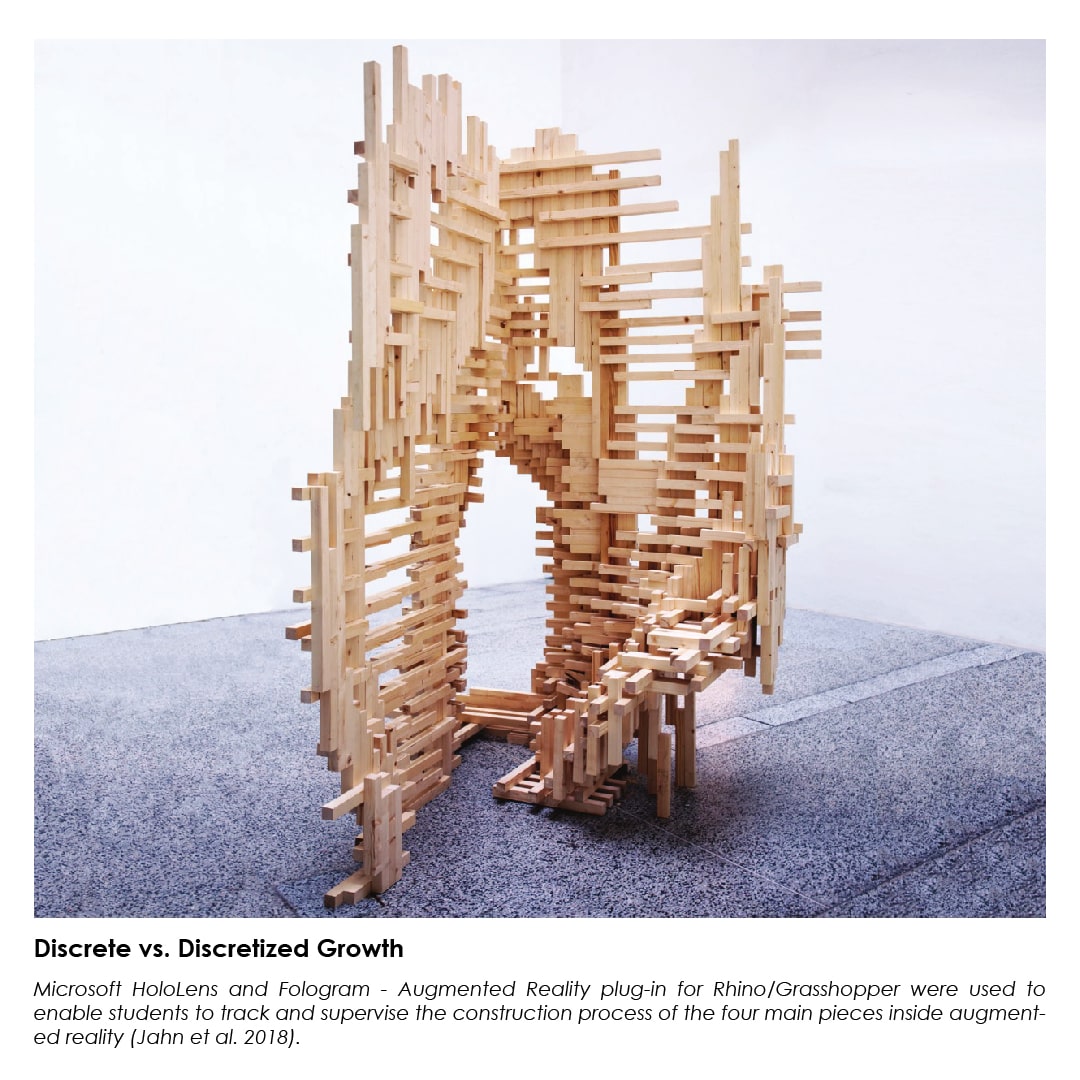 The computational simulation of growth processes has been pursued by different disciplines. In computer science, especially Artificial Life, the aim is to create and understand processes that portray life-like behaviors, while in biology and medicine the focus is on creating models that simulate real-life to a high degree of accuracy.
The computational simulation of growth processes has been pursued by different disciplines. In computer science, especially Artificial Life, the aim is to create and understand processes that portray life-like behaviors, while in biology and medicine the focus is on creating models that simulate real-life to a high degree of accuracy.
 On the contrary in design, art and architecture, the aim is often to generate new types of geometries with novel, highly complex or aesthetically pleasing characteristics, and in architecture specifically, geometries that may be able to solve specific functional requirements.
On the contrary in design, art and architecture, the aim is often to generate new types of geometries with novel, highly complex or aesthetically pleasing characteristics, and in architecture specifically, geometries that may be able to solve specific functional requirements.
 A growth simulation, with its iterative development towards a larger accumulation of mass, provides the opportunity of an also iterative evaluation of the current state of the geometry, which can then influence the behaviors that guide the growth to develop towards a desirable outcome, on the global as well as local level.
A growth simulation, with its iterative development towards a larger accumulation of mass, provides the opportunity of an also iterative evaluation of the current state of the geometry, which can then influence the behaviors that guide the growth to develop towards a desirable outcome, on the global as well as local level.
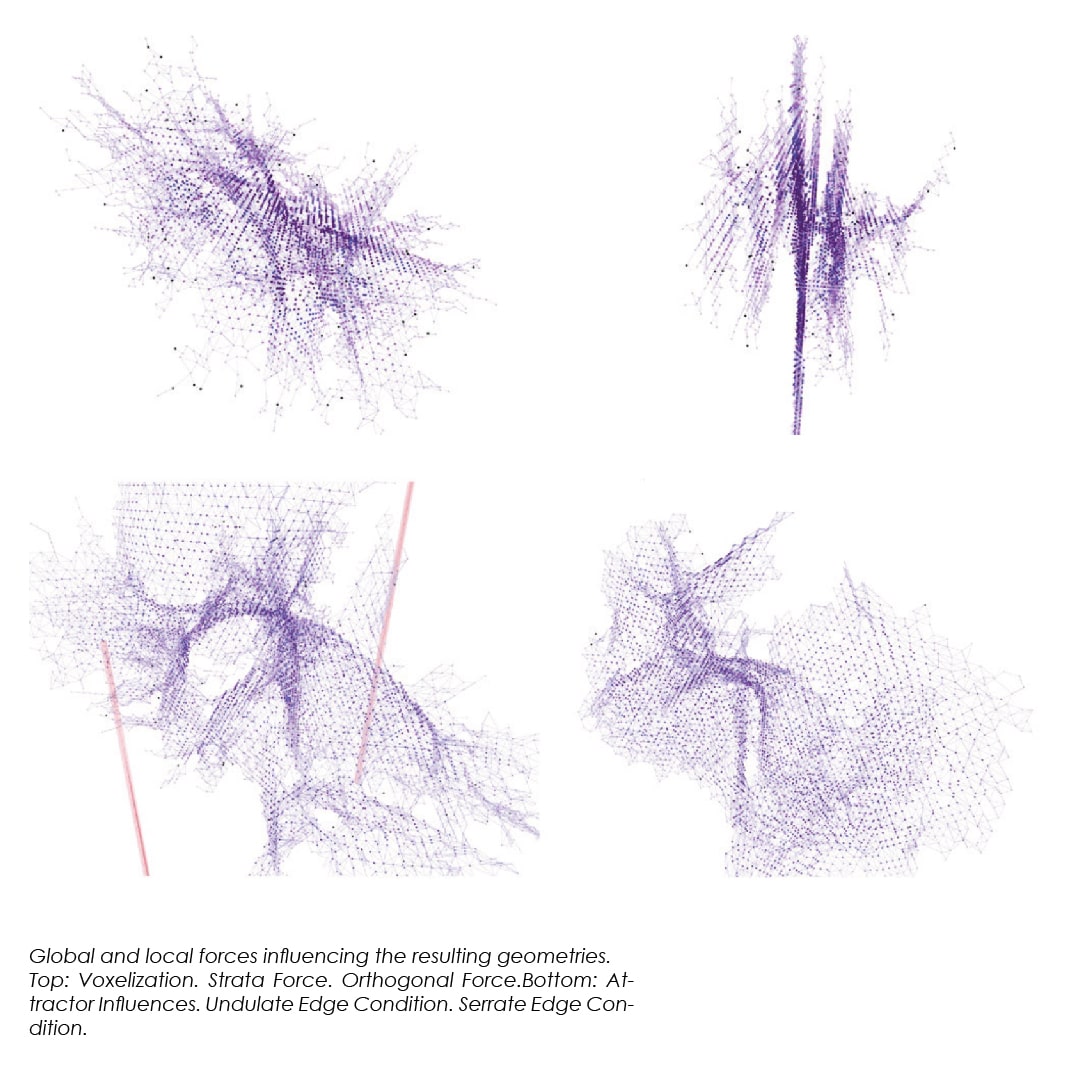 Various types of computational growth simulations have been developed. Due to the algorithmic complexities and the speed of computing, early simulations were often based on calculations within a rectangular grid, such as Diffusion Limited Aggregation (DLA) or Cellular Automata (CA) and Conway’s Game of Life.
Various types of computational growth simulations have been developed. Due to the algorithmic complexities and the speed of computing, early simulations were often based on calculations within a rectangular grid, such as Diffusion Limited Aggregation (DLA) or Cellular Automata (CA) and Conway’s Game of Life.
On the contrary, more recent simulations make use of free-form geometry in 3D-space, such as Differential Growth, Cellular Growth algorithms or the CA-based SmoothLife.
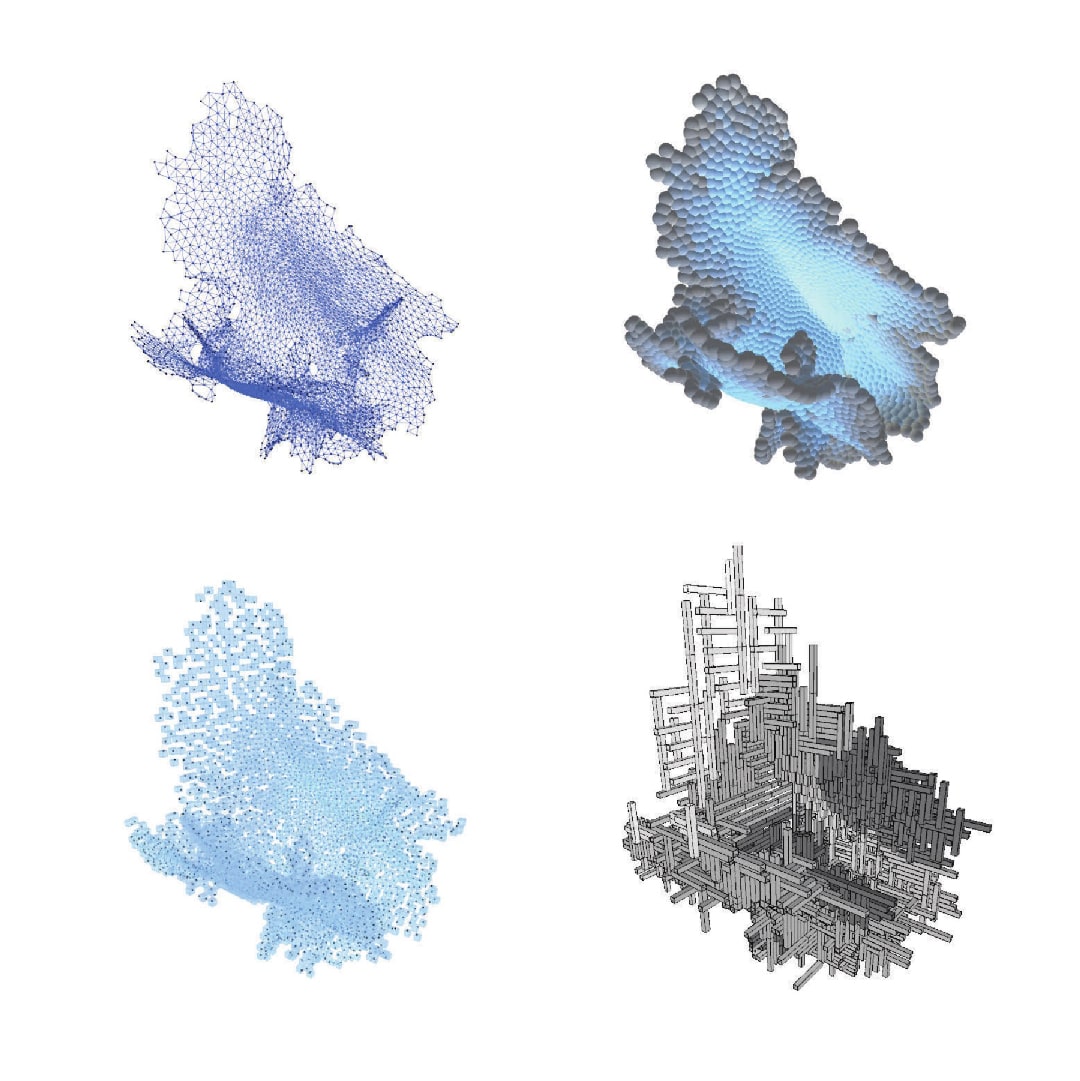 The grid-based simulations can have very simple logics that generate a high degree of complexity and are therefore of great interest to the study of Artificial Life.
The grid-based simulations can have very simple logics that generate a high degree of complexity and are therefore of great interest to the study of Artificial Life.
However, the constraint of the grid results in very specific types of geometries that are usually not suitable for the simulation of biological behaviors, so here the free arrangement of geometry in space is usually used.
Also from an architectural perspective, CA and DLA have been used for experimental research projects, but it has been found that the resulting geometries are usually impossible or very difficult to rationalize for real-world projects.
The geometries that are generated by the algorithms are hard or impossible to control, and don’t appear to be suitable for addressing functional architectural problems.
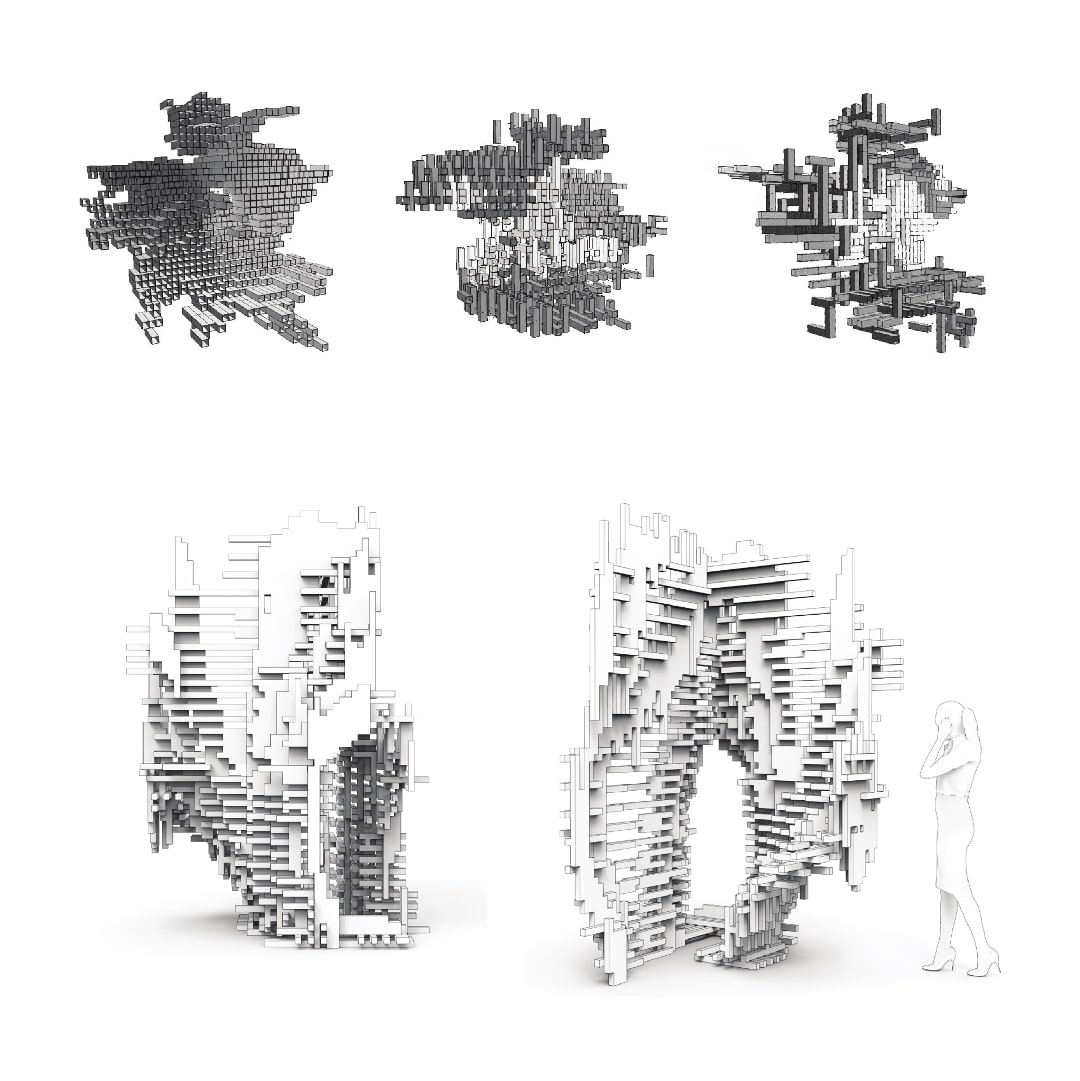 In respect to architectural applications, especially if intended for real-world projects, apart from the generation of a functioning geometry also the efficiency and economic buildability are of high importance.
In respect to architectural applications, especially if intended for real-world projects, apart from the generation of a functioning geometry also the efficiency and economic buildability are of high importance.
Although there have been many advances in construction methods of curved geometry, and the 3D-printing of buildings is in development, economy in today’s construction industry is still mostly driven by the use of repetitive elements and mostly rectangular geometries.
In terms of buildability, the outcomes of the grid-based algorithms therefore rate much better than the free-form geometries that are generated by the more recently developed algorithms, which usually do not exhibit any repetition at all.




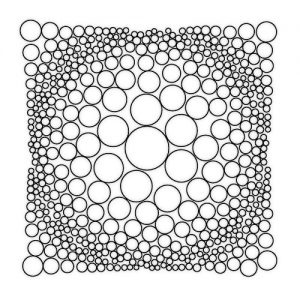























Comments